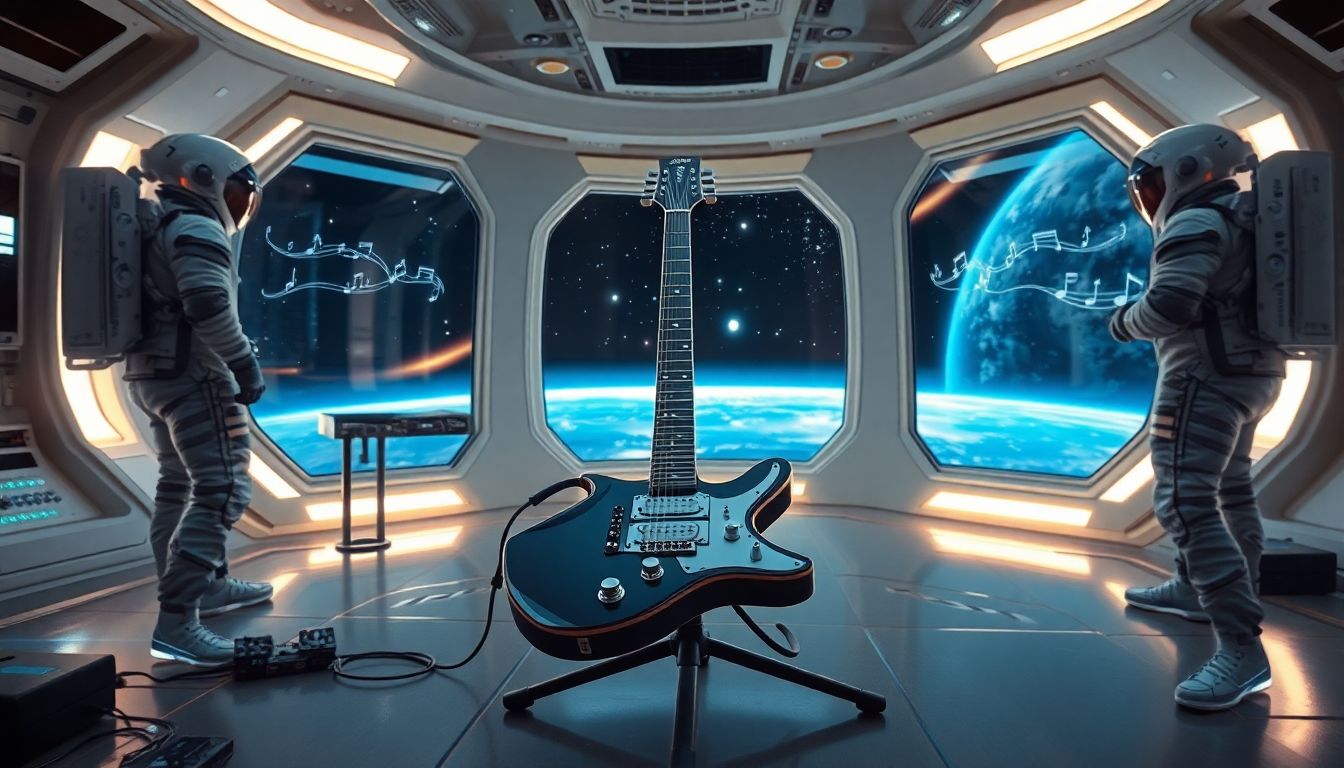Would a Guitar Sound the Same in a Space Station? Exploring Sound, Space, and Musical Possibilities
Have you ever wondered what it would be like to play guitar in space? Would your favorite chords sound the same floating inside a space station? This question sparks curiosity about how sound works beyond Earth. Since space environments are so different from our daily life, understanding how sound behaves in zero gravity is essential. It’s a fascinating area for musicians and space fans alike. Playing guitar in space isn’t just about the music—it's about exploring the unique limits of sound in the universe.


Would a Guitar Sound the Same in a Space Station? Exploring Sound, Space, and Musical Possibilities
Introduction
Have you ever wondered what it would be like to play guitar in space? Would your favorite chords sound the same floating inside a space station? This question sparks curiosity about how sound works beyond Earth. Since space environments are so different from our daily life, understanding how sound behaves in zero gravity is essential. It’s a fascinating area for musicians and space fans alike. Playing guitar in space isn’t just about the music—it's about exploring the unique limits of sound in the universe.
How Sound Propagates: The Basics of Acoustics
Understanding Sound Waves
Sound travels as waves of energy. These waves move through a medium like air, water, or solids. When you pluck a guitar string, it vibrates. These vibrations turn into sound waves that your ear can hear. Each wave has properties like frequency (which determines pitch), amplitude (which affects loudness), and speed. High-frequency waves sound high-pitched, while low-frequency waves sound deep.
The Role of Mediums in Sound Transmission
Sound needs something to travel through. It can’t just float around in empty space. Air, water, and solid materials all serve as mediums for sound. Usually, air carries sound easily on Earth. But the speed and quality depend on what the sound is traveling through. For example, sound travels faster through steel than through air. That’s why a metal pipe can carry sound farther and clearer than thin air.
Acoustic Properties on Earth vs. Space
On Earth, sound bounces off walls and objects. We hear echoes and reverberations. In space, however, there’s no air or other mediums in the vacuum. Without a medium, sound can’t travel. If you shouted in the vacuum of space, you’d be the only one hearing it—no one else would. So, the physics of sound change completely once you head off our planet.
The Environment of a Space Station: What Makes It Unique
Vacuum and Zero Gravity
Most of space is a vacuum, meaning no air to carry sound. Inside a space station, it's a different story, but only because of the station's enclosed atmosphere. In space, no air equals no sound traveling outside. Zero gravity doesn’t affect sound directly but influences how objects and equipment behave when played or handled.
The Interior Atmosphere of a Space Station
Space stations like the International Space Station (ISS) breathe a controlled mixture of oxygen and nitrogen. This artificial air forms a medium that allows sound to travel inside the station. Inside, the air acts just like on Earth, letting you hear music, voices, or guitar strings. This makes space stations a perfect environment for musicians—if they have the right gear.
Noise Levels and Acoustic Design
Space stations can be noisy places. Equipment, fans, and life support systems hum constantly. Engineers design the interiors carefully to dampen excessive noise and improve how sounds echo around. Acoustic treatments help make space more livable and ensure astronauts can communicate clearly, whether they’re chatting or playing tunes.
Would a Guitar Sound the Same in a Space Station?
Sound Propagation in a Space Environment
Outside the station, no sound can travel through the vacuum of space. You could strum your guitar all day, but no one outside will hear a thing. The sound only exists inside the station where there’s air. Inside, the environment supports normal acoustics—maybe even better, since engineers often optimize interior spaces for sound quality.
The Effect of Microgravity on Playing a Guitar
Playing a guitar in zero gravity could feel strange. Without gravity, strings and fingers float. You might need special grips or clamps. Strumming could be tricky because your hand won’t rest on the strings naturally, like on Earth. It might take some time to get used to the new way of playing in space.
Comparing Sound Quality: Earth vs. Space Station
Inside the station, sound depends on the setup. Walls, furniture, and acoustic treatments shape how music sounds. It might be more lively or more muffled depending on the interior design. But it won’t match the natural acoustic environment of an open-air concert on Earth. Still, musicians in space can create impressive sound experiences, even if they’re different.
Practical Considerations for Playing Guitar in Space
Using Amplifiers and Speakers Internally
Musicians in space would rely on onboard amplifiers or headphones. Since sound doesn't escape into the vacuum, loudspeakers inside give the best experience. Headphones are essential for clarity, especially when communicating with crew members or recording music. Modern systems can replicate Earth-like sound quality, making space music recordings possible.
Creating a Musical Experience in Zero Gravity
Playing guitar in zero gravity demands creativity. Strumming techniques might change, and stabilizing the instrument becomes a challenge. Some astronauts could attach their guitars to stands or harnesses. These adaptations turn music-making into an innovative activity, blending physics with artistry. Zero gravity might even inspire new musical styles or methods.
Future Possibilities and Experiments
NASA and other space agencies are curious about music’s role in space. They’ve experimented with musical activities for relaxation and mental health. The idea of a space studio for recording or performing is not far off. Future missions might include dedicated music modules that let astronauts jam, compose, and even perform concerts in orbit. When humans venture further into space, music could become a vital part of the experience.
Conclusion
Sound, as we know it, simply can't travel through the vacuum of space. So, a guitar would not sound outside the space station unless it’s recorded inside first. Inside, the station’s artificial atmosphere allows sound to flourish—almost like a tiny Earth in the sky. Musicians face unique challenges but also have the chance to push creative boundaries in space. Exploring how music and space intersect opens exciting possibilities for future missions and musical innovation beyond our planet. Whether it’s strumming under zero gravity or recording in space labs, the future of space music holds endless potential.



 VARSHITHA
VARSHITHA